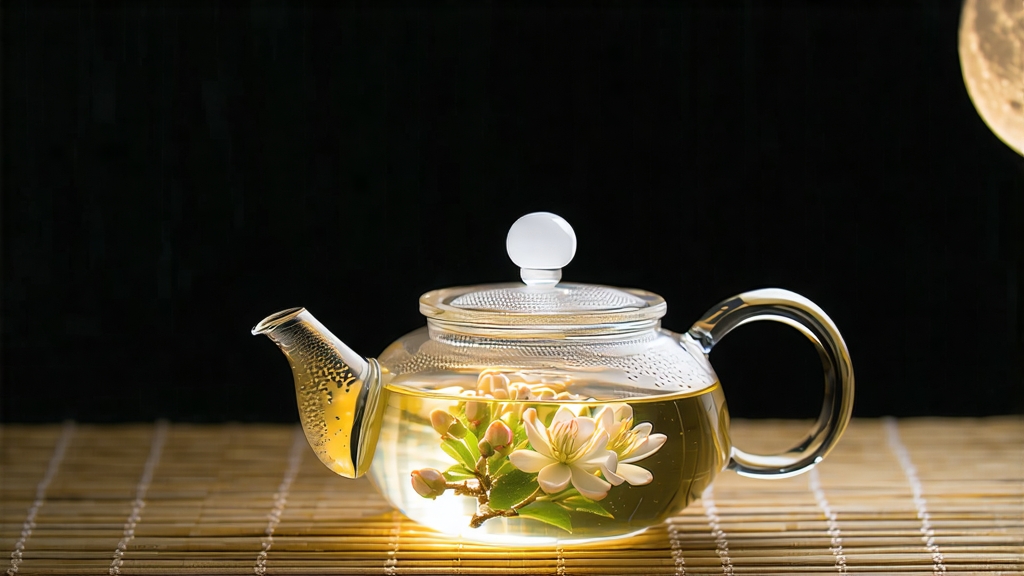
White tea is the quietest child in the Chinese tea family, and within that hush White Hair Silver Needle (Bai Hao Yin Zhen) is the whisper you strain to hear. Unlike the dramatic pan-firing of green tea or the rolling oxidation of oolong, Silver Needle is made by doing almost nothing—yet nothing must be done at precisely the right moment, in the right place, by the right hands. To understand why this simple-looking bud commands higher prices than many long-winded black teas, we must travel to the north-eastern corner of Fujian province, where the Min mountains slope gently toward the East China Sea, and where the first tender buds appear when the peach blossoms are still braving late-winter chill.
Historical records first mention “white tea” during the Song dynasty (960-1279), but Silver Needle as a named commodity appears only in the late 1700s, when the royal court of the Qing still demanded tribute teas. Local legend says a county magistrate, hoping to impress the Qianlong Emperor, ordered villagers to pick only the fattest, unopened buds at dawn before the dew dried. The buds were laid on bamboo trays, left to breathe under the moon, then packed in silk and rushed north by horseback. The Emperor is said to have brewed the needles in a glass snifter; watching them stand upright like miniature ivory pagodas, he christened the tea “Bai Hao Yin Zhen”—White Hair Silver Needle—for the downy silver filaments that cling to each bud like frost on a plum branch. Whether apocryphal or not, the story captures two enduring qualities of the tea: imperial elegance and an almost ghostly subtlety.
Strictly speaking, only two counties—Fuding and Zhenghe—produce buds authentic to the protected geographical indication of Silver Needle. Within Fuding, the micro-villages of Taimu Mountain enjoy the highest prestige; their bushes, the Da Bai (Big White) and Da Hao (Big Hair) cultivars, develop extra-long buds rich in amino acids and covered in protective trichomes. Zhenghe, slightly higher in altitude, yields a slimmer, more aromatic needle prized by blenders for its honeyed nose. Purists debate which style is “true,” but both share the same minimalist craft: pick, wither, dry, sort. Four verbs hide a thousand nuances.
Picking begins in mid-March, when five consecutive days above 15 °C coax the bushes out of winter dormancy. Experienced pluckers use only the thumb and index finger, snapping the bud cleanly so the tiny “fish-tail” leaf base remains intact. A full kilogram of finished tea needs roughly 30 000 buds, all picked before ten in the morning while moisture is still high; this natural hydration later helps the enzymatic reactions that create Silver Needle’s signature creaminess. Baskets are woven from thin bamboo strips to prevent bruising, and buds arrive at the factory within two hours—any delay triggers oxidation that would stain the pristine silver.
Withering is where Silver Needle is truly born. Traditionally, buds are spread one layer thick on reed mats in a sun-lit courtyard. Every fifteen minutes the tea master lifts an edge, letting the buds tumble like loose change so each side receives equal light. When the sun grows harsh around noon, mats are slid onto bamboo racks inside an airy pavilion; here, mountain breezes threaded with the scent of pine and sea salt continue the work. The goal is to reduce moisture from 75 % to 10 % without ever exceeding 35 °C, preserving the delicate enzymes responsible for white tea’s subtle sweetness. On humid days, charcoal pits built from local loam provide gentle bottom heat, but the fire must be scented-free—no longan or lychee wood that might perfume the tea. The entire process can last forty-eight hours, during which the master never sleeps, relying on touch and aroma rather than timers. When a bud snaps cleanly between the nails and releases a faint sugar-cane note, withering is complete.
Drying was once done in small batches over charcoal ash, but modern producers favor low-temperature ovens set to 40 °C for ninety minutes. The innovation reduces grassy off-notes and stabilizes the buds for export without betraying the tea’s ethos. After cooling, buds are hand-sorted under full-spectrum light; any needle bearing a greenish bruise or reddish tip is removed. The final grade is measured by bud length (minimum 2.5 cm),